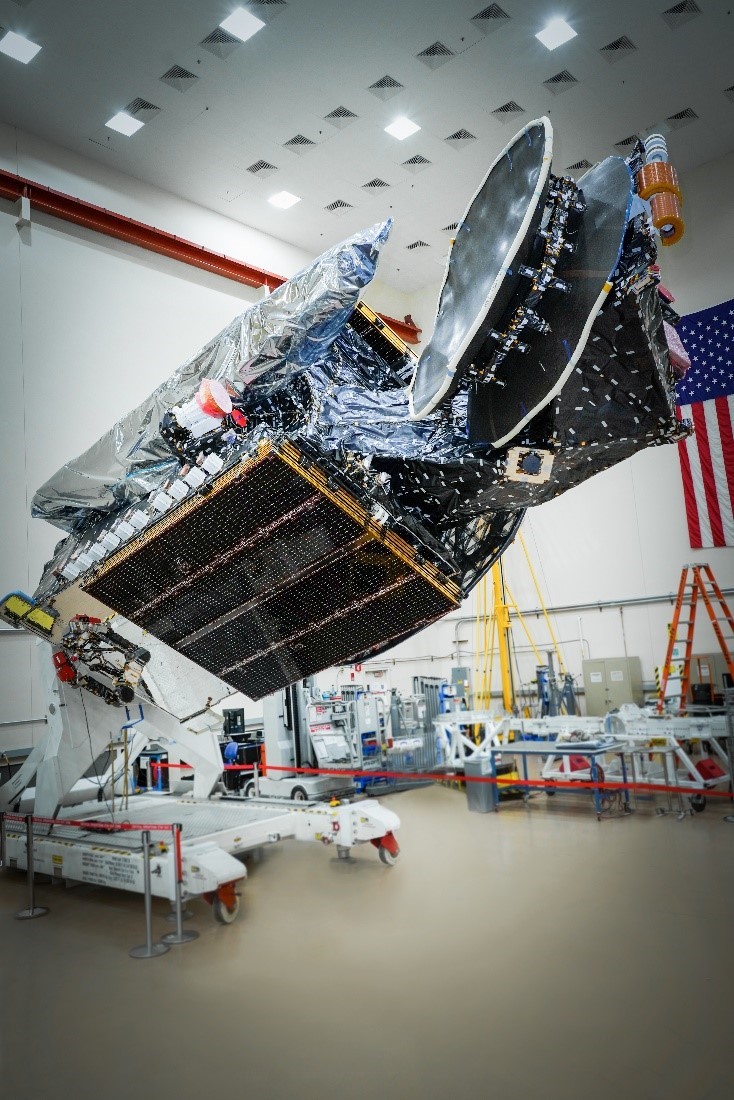Auckland-based 3D titanium printing firm Zenith Tecnica is celebrating five years of partnership with satellite manufacturer Maxar Technologies, having 3D printed 260 titanium components for the company’s satellites.
Since 2016, Maxar Technologies has built and launched five spacecraft equipped with 3D printed components from Zenith Tecnica, and an additional 270 additively manufactured parts are currently in production on eight other satellites.
“Maxar is committed to additive manufacturing and is a fantastic customer,” said Peter Sefont, Technical Director of Zenith Tecnica. “Its team is pragmatic and collaborates with suppliers to successfully leverage all the benefits that additive manufacturing has to offer. We are incredibly proud to be playing a part in the manufacturing of their spacecraft.”

Zenith Tecnica’s 3D printed titanium components
Since its foundation in 2014, Zenith Tecnica has become one of the highest capacity electron beam melting (EBM) metal 3D printing service bureaus in the world.
The company utilizes EBM printers from GE Additive subsidiary Arcam AB, adding its third and fourth machines in 2015, and a further two Q10 plus systems in 2019.
Arcam’s patented EBM process allows for elevated build platform and chamber temperatures, removing the need for post-printing heat treatment stress relieving. One of the unique benefits of EBM technology is that the process is conducted in a vacuum, eliminating the possibility of gas contamination.
Zenith Tecnica has leveraged its Arcam machines during an ongoing partnership with Air New Zealand to produce 3D printed metal aircraft parts. The firm 3D printed wine aerators, cocktail trays and a metal frame for in-flight entertainment screens for Air New Zealand’s aircraft interiors.
In 2016, Zenith Tecnica received qualification for the production of unmanned space flight components and two years later its first satellite components were launched into orbit.

Zenith and Maxar’s ongoing partnership
Leveraging Zenith Tecnica’s titanium 3D printing capabilities, the company’s customers are able to optimize the hardware and thermal characteristics of parts designed for specific satellite features and payloads.
Enabling designs that were previously unachievable with traditional manufacturing methods, Zenith Tecnica’s 3D printing technology delivers parts with reduced mass, fewer pieces of hardware, and improved life on-orbit.
Maxar Technologies was an early adopter of additive manufacturing and established its Additive Center of Excellence in 2012. After undertaking a validation and qualification process, Zenith Tecnica’s EBM titanium material and processes were qualified for flight. In 2016, the first EBM titanium components were sent into orbit.
The titanium satellite parts are 3D printed using Zenith Tecnica’s Arcam EBM machines before being heat treated and critical assembly features machined. 3D scanning inspections are then carried out to ensure all parts conform to specifications.
Maxar Technologies has reportedly seen multiple benefits since introducing Zenith Tecnica’s additive manufacturing capabilities for the production of its spacecraft components, including improved schedule agility, reduced manufacturing costs, and improved performance of its satellites.
“The team at Zenith Tecnica operates as an extension of Maxar’s team, and they always go the extra mile to ensure parts are delivered to a high standard of quality,” said Gina Ghiglieri, Additive Manufacturing Technology Manager at Maxar Technologies. “Zenith Tecnica has been with us since the first metal additive manufacturing programs at Maxar and has performed a critical role in helping define and qualify these production processes.”
Having worked together to launch five spacecraft with 260 3D printed titanium components so far during their partnership, the two firms have a further 270 additional 3D printed parts in production and assembly across eight other satellites.

3D printing for satellites
3D printing is being increasingly leveraged for the production of optimized satellite components, such as radiofrequency (rf) circuits, waveguide signal interconnects, and ceramic antennas.
Last year, Canadian manufacturing service bureau Burloak Technologies and communications firm MacDonald, Dettwiler and Associates (MDA) signed a new five-year deal to continue to optimize the design and production of 3D printed satellite components.
Since the start of 2021, metal 3D printing specialist Fabrisonic has deployed its proprietary Ultrasonic Additive Manufacturing (UAM) technology to create better value satellite heat exchangers for NASA’s Jet Propulsion Lab, and the Skolkovo Institute of Science and Technology (Skoltech) and material provider RUSAL have 3D printed casings for the Yarilo satellite using a novel aluminum.
Most recently, aerospace manufacturer Airbus announced it has 3D printed a total of 500 RF components for Eutelsat’s Eurostar Neo series of relay satellites. Marking an entry into high-volume production, Airbus was able to achieve significant lead time and cost reductions for the parts, which will be fitted to two of Eutelsat’s Hotbird spacecraft and launch into Low Earth Orbit (LEO).
Subscribe to the 3D Printing Industry newsletter for the latest news in additive manufacturing. You can also stay connected by following us on Twitter and liking us on Facebook.
Looking for a career in additive manufacturing? Visit 3D Printing Jobs for a selection of roles in the industry.
Subscribe to our YouTube channel for the latest 3D printing video shorts, reviews and webinar replays.
Featured image shows Maxar-built SXM-8 is positioned in full-flight configuration at Maxar’s manufacturing facility in Palo Alto, California. Photo via Maxar Technologies.


